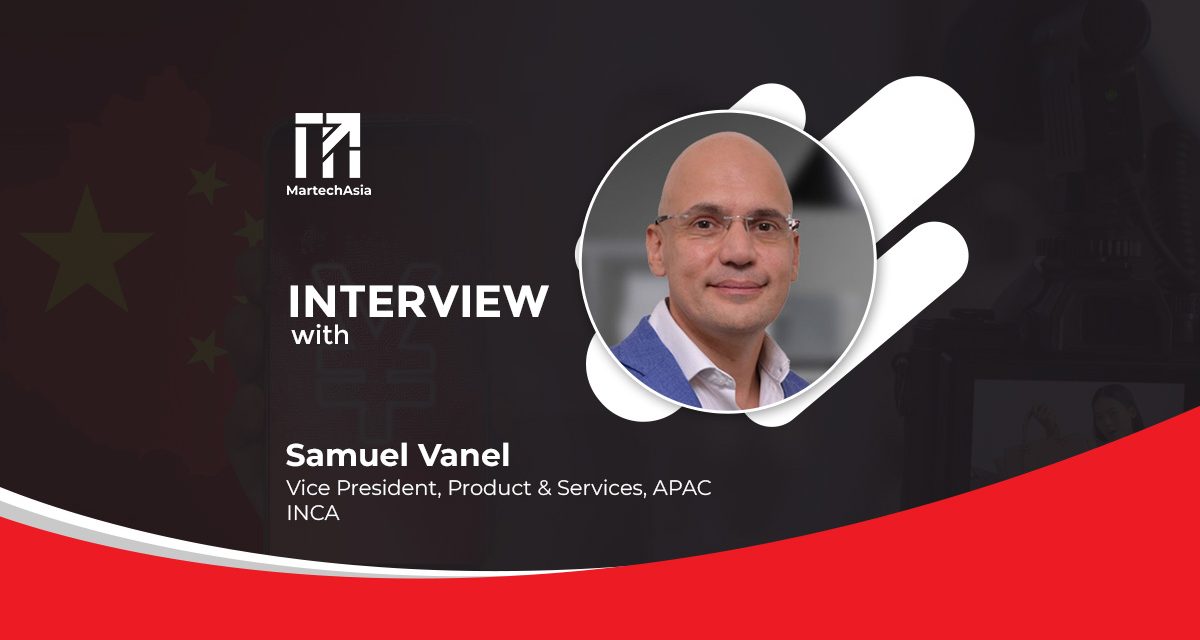As brands increase their budgets for content creators, there will be a greater need for smarter planning and data-driven strategies, says Samuel Vanel, Vice President, Product & Services, APAC, INCA in this interview with MartechAsia.
Revenge shoppers – What are they like? What do they value? What else are they expecting from brands aside from quality products and services?
Revenge shopping, or extravagance purchase that occurs after a period of frugal spending, is a consequence of the pandemic. Customers who revenge-shop, prefer exorbitant luxury items to mid-tier or lower-priced items to compensate for the “lack of luxury” they’ve just experienced.
As many have been holding back during lockdowns, revenge shoppers expect engagement between themselves and brands, where they expect a genuine experience that they were unable to have due to the situation. Influencer marketing offers this level of engagement.

How can creators bridge the gap between revenge shoppers/travellers and traditional brands/businesses?
Creators create content that combines a brand’s offline and online experiences, creating a hybrid purchasing experience for the brand in a way that’s distinctive, complementary, and engaging.
For consumers who routinely engage in travel or retail therapy, the pandemic has been a disruption to their lifestyles. Shoppers and travellers have focused much of their time on social media, particularly during the last two years. Staying home and socially distant has led to an increase in the consumption of digital content, particularly by creators, as a window to the outside world.
Content creators can close the gap between customers and brands by sharing specific and insightful experiences that can bring value to the brands and the customers, especially when consumers are staying safe indoors. By directly linking the brands’ products or services through their social channels, the buying or purchasing process could be streamlined.
The message that the brands want to share with their audiences will resonate well if they collaborate with the right creator personalities. Additionally, by leveraging platforms’ live streaming features, creators can provide unique offers or promotions, enabling brands to strengthen their relationships with a wider range of customers.
How can brands connect with creators to engage their target consumers during the Chinese New Year?
In order to reach the right audience, brands must determine the appropriate level of investment to achieve the desired share of voice against competitors, particularly during the saturated festive season. Identifying the right channel mix and personality that resonates best with target audiences, backed by data-led insights, will maximise the impact of the creator campaigns. Vital information to help brands make informed decisions include market landscape, competitors activities, trending ideas and content that resonates with the brand’s target audience.
To engage with their target consumers during this Chinese New Year season, brands should collaborate with relevant creators to run live sessions on marketplaces using streaming features in order to help them deliver their message and promote the brand. Live streaming and establishing online communities is one of the most effective methods of building meaningful connections with a brand’s target audiences. Creator-led livestream activations include tapping on hyperlocal trends and cultural moments, hosting giveaways or Ask-me-anythings (AMAs).
How will creators marketing look like in 2022 and how brands can take advantage of them?
Brands will look for different ways to engage more with content creators, such as building their own communities, co-creating content, or long-term partnerships. Working with creators will no longer be limited to awareness and brand building, but will begin to play a larger role further down the marketing funnel. We can expect increased investment in social commerce approaches through live streaming on social platforms.
As brands increase their budgets for content creators, there will be a greater need for smarter planning and data-driven strategies. Brands will need to extend their creator roster above and beyond their traditional categories in order to reach a broader audience and leverage creators with diverse followings. Micro and nano creators’ share of the overall creator industry will continue to be favoured by brands favouring due to their higher engagement rates and more affordable costs. There will also be a greater focus on measurable and tangible insights to help brands understand how the content performed and how the campaign can improve.


















